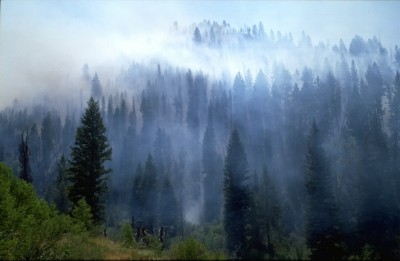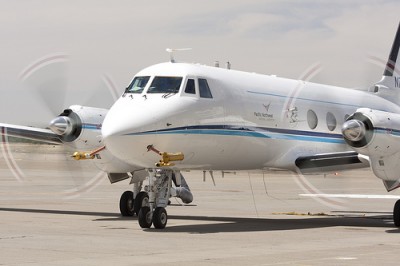Aerosol Research Heats Up During Summer Fire Season
Published: 8 July 2013

While the impacts of wildfires on people and the surrounding environment are apparent, the effect on the atmosphere from smoky soot particles—a type of aerosol—is much less so. Whether from grass, timber, or brush, each type of biological material releases its own sooty chemical signature that interacts differently with sunlight, clouds, and other particles in the sky. How does this mingling affect Earth’s climate?
Enter the Biomass Burning Observation Project, or BBOP.
Beginning in July, scientists funded by the U.S. Department of Energy will maneuver a high-tech research aircraft into the plumes of wildfires to collect samples of smoke near the source (new) and downwind (aged). Researchers will analyze both new and aged samples to study the evolution of smoke particles.

Flights will be based out of Pasco, Washington, from July through September to reach wildfires ranging from Washington to Montana and northern California. In October, aircraft operations move to Memphis, Tennessee, when yearly agricultural burns take place in that region.
The BBOP science team is led Lawrence Kleinman and Arthur Sedlacek of the Department of Energy’s Brookhaven National Laboratory. Aircraft operations are led by the DOE’s ARM Aerial Facility team from Pacific Northwest National Laboratory, using a Gulfstream-1 research airplane outfitted with 35 different probes and sensors for this study.
For more information:
- Brookhaven press release: Department of Energy Lab Field Study Will Sample Aerosols from Biomass Burning
- BBOP webpage: http://campaign.arm.gov/bbop/
The ARM Climate Research Facility is a DOE Office of Science user facility. The ARM Facility is operated by nine DOE national laboratories, including .
Keep up with the Atmospheric Observer
Updates on ARM news, events, and opportunities delivered to your inbox
ARM User Profile
ARM welcomes users from all institutions and nations. A free ARM user account is needed to access ARM data.


















